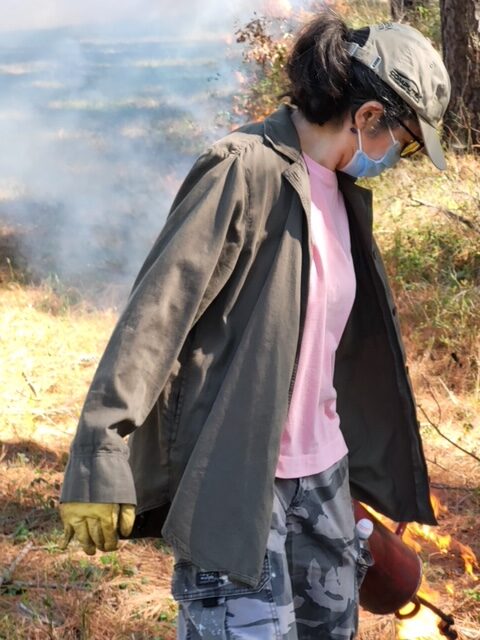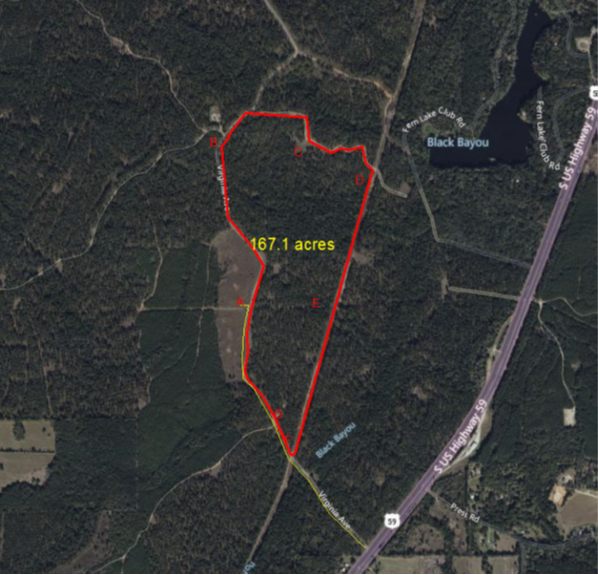by Bee Harris, PWLTMN Member
Clothing: boots (preferably leather), cotton pants, long sleeved shirt (no synthetic materials), and gloves
I was excited to attend my first prescribed burn. It was a chance to learn the ‘how-to’ of controlled burns –something very important to me – my husband and I are planning on implementing a prescribed burn on our acreage, but it will take years to prepare the land.
This burn took place on the Winston 8 Ranch Tree Farm in Nacogdoches, Texas. Once we received the final logistics of the burn, our teams were ready for the 167-acre burn.
At this on-site workshop, I learned that the land must be prepared beforehand, weather conditions for the control burn had to be planned and met before the burn could be done, local authorities are always notified in advance, and a team of professionals need to be on site.
After 2 cancellations due to weather not cooperating, the go ahead for the burn was given. Professionals and volunteers gathered to hear the history of the acreage and receive further instruction on how the burn would proceed. (Close to 200 acres were burned that day.)
The planning diagram for the burn showed the land divided into sections –I volunteered to carry the drip torch and set a starter fire on a chosen section. This being my first time, I listened carefully to the instructions. One member commented that his pant leg had caught fire in a previous control burn –I noted he was now wearing flame retardant clothing mental note: I’m going to buy flame retardant pants for my next burn.
The burn continued as planned. Our watchful eyes noted when tree catface (sap leakage from tree scars) caught fire on several trees and flames began an upward motion. Immediately, dirt was flung on the lapping flames –it stopped them from going higher. If the crown caught fire, it could cause embers to light the surrounding canopy and cause wildfire; however, the land had been well prepared, and loss of control was highly unlikely.
Note: Sections of the burn acreage are labeled A B C D E F G. The sections are bound by roads
and a pasture, creating fire breaks.
If you are interested in volunteering to be a part of a prescribed burn team, you may contact Kyle Carrington, East Texas Prescribed Fire Outreach Coordinator. Cell: 970.275.1939
My next article will cover why prescribed burns are a necessary part of maintaining healthy ecosystems in Texas.




